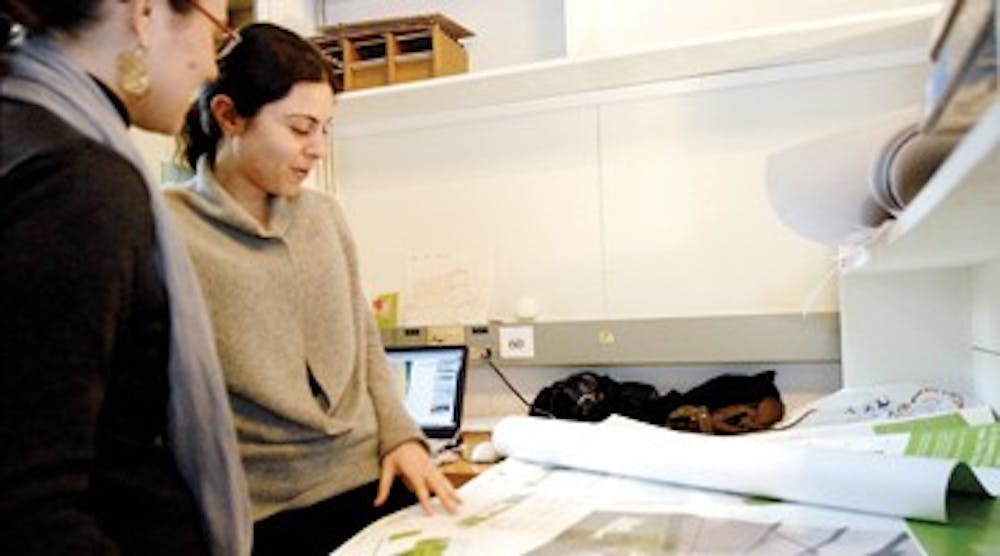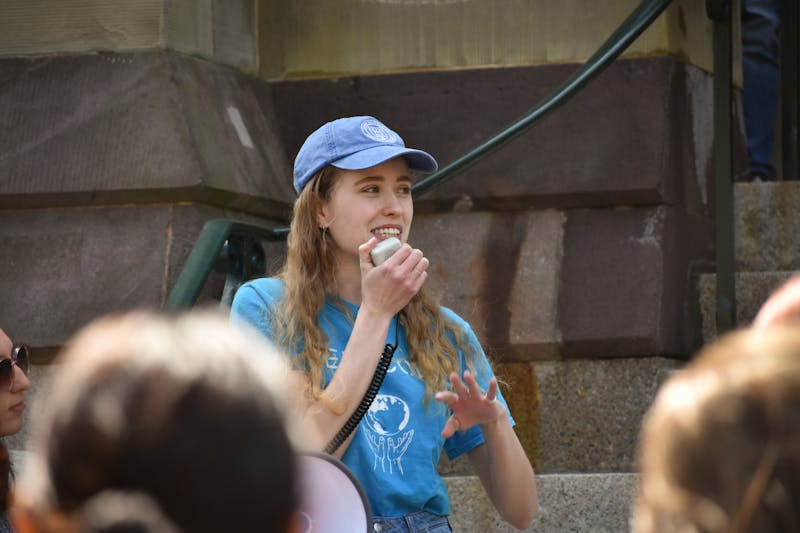
Inflatable walls and indoor gardens may not be a part of the average student residence, but students in Design professor Bill Braham's design studio for second-year architecture graduate students are testing out their potential.
The 11 students in the studio - divided into five teams of two or three - are working to design student housing that produces net-zero carbon emissions using two vacant lots in West Philadelphia as the models.
Environmental sustainability "is a pressing problem that has really just recently been formulated in the U.S.," said Braham, adding that his goal was to bring the problem into the design studio to look for a solution.
On the larger site, located at 43rd and Chestnut streets, two groups are designing dormitory-style housing, and on the smaller site, at 44th and Locust streets, three groups are designing group homes.
In addition to reaching net-zero carbon emissions, Braham challenged students to strive for net-zero energy and water consumption and, when possible, net-zero waste in their designs.
Many of them are achieving these goals.
The project is "completely speculative," Braham explained, meaning there are no actual plans for the designs to be physically implemented. He has encouraged students to be creative with their designs, and the students have responded with innovative ideas, although not all are commercially feasible.
Students Alex Muller and Vincent Leung are designing an "inflatable wall" as part of their design for a group home. The wall, also known as a "double-skin facade" can respond to seasonal variations by inflating to create better insulation in the cold months and deflating to decrease insulation in the warm months. Their designs even have different settings for rain and sun.
"With this skin, we can get a nearly 40 percent decrease in heating and cooling consumption," Leung said.
Kara Medow said her design - which she created with Natalie Golnazarians and Leslie Billhymer - uses an indoor garden, rather than the more complicated technology of some projects, to achieve net-zero carbon, water and possibly energy.
Still, she emphasized that since the whole idea of the studio is to experiment, "no one's really working on anything that's normative."
She explained that students considered their own lifestyles in creating their designs, counting the number of times they flush toilets and take buses, for example.
At the end of the course, the designs will be presented to Facilities and Real Estate Services, who will see if they can use any of the students' ideas in future projects, though it does not know how much of the projects they will be able to use.
"At the moment we're just interested in watching the project play out," University Architect David Hollenberg said.
He added that he is excited to see the end result. "I was an architecture student once myself," he said, "and you're supposed to push the envelope as much as you can."
The Daily Pennsylvanian is an independent, student-run newspaper. Please consider making a donation to support the coverage that shapes the University. Your generosity ensures a future of strong journalism at Penn.
DonatePlease note All comments are eligible for publication in The Daily Pennsylvanian.







